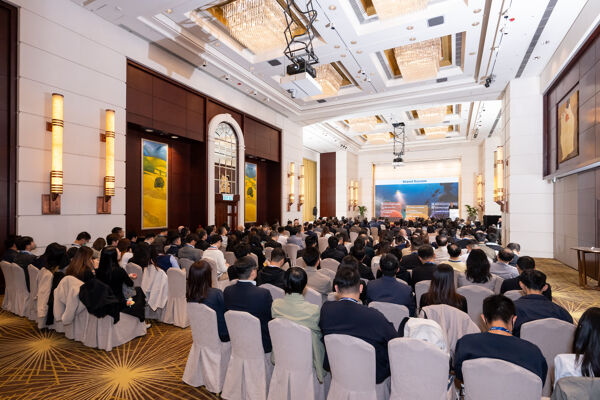
Key Points
- Adoption of NEC in Hong Kong has involved some local adaptations which deviate from NEC’s original goal of collaborative working.
- Examples include lack of independence of the project manager, unnecessary Z clauses and unfair pain and risk sharing, all of which can be improved.
- Greater use of AI and fostering a psychologically safe environment will also support NEC’s principles of openness, responsiveness and shared achievement.
The NEC is more than a contract. It is a philosophy, centred on collaboration, transparency and trust.
Full adoption of NEC in Hong Kong was a bold and visionary step by the construction industry. However, full adoption also requires continuous learning and refinement. This raises important questions: has the industry fully embraced the spirit of NEC or simply adopted its form?
Based on the author’s senior-level experience of large NEC contracts in Hong Kong and insights shared during the Hong Kong Construction Association’s International Conference 2024, this article explores how certain local adaptations may have drifted from NEC’s original intent. It then suggests practical ways to realign the industry’s approach for greater success.
NEC core principles
At the heart of NEC4 lies a fundamental philosophy: the active pursuit of collaboration, mutual trust and collective problem solving among all key participants. This is not merely aspirational – it is explicitly embedded in the contract through clauses 10.1, 10.2 and 11.2(13).
Clause 10.1 requires the client, contractor, project manager and supervisor to ‘act as stated in this contract’. Clause 10.2 goes further: it mandates them ‘act in a spirit of mutual trust and co-operation’. Importantly, clause 11.2(13) reinforces that the client and contractor together form the ‘Parties’, highlighting a structural relationship based on unity rather than adversity.
In practice, this means the project manager must engage fairly with both the client and the contractor, helping solutions that promote the overall success of the project, rather than acting solely on behalf of the client. Hence, the project manager plays a crucial role in enabling collaboration, integrating perspectives and keeping balanced project governance.
The collaborative model distinguishes NEC from traditional contract approaches. It looks to foster open communication, joint risk management and proactive problem solving, key ingredients for innovation, efficiency and shared success. Understanding and embracing this spirit of partnership is fundamental to unlocking the full value of NEC4 contracts.
Challenges in practice
While adoption of NEC in Hong Kong is commendable, some adaptations present challenges that merit reflection.
For example, project managers are often appointed from the client’s design team and may also have a role in drafting contract documents. This dual role risks perceived conflicts of interest and may diminish the neutrality expected under NEC.
Furthermore, while options W1 and W3 are intended for prompt and cost-effective dispute resolution, they deviate from international practices so are frequently not used. This may limit early issue resolution, undermining the collaborative spirit of the NEC framework.
Overuse of additional Z clauses is another common issue. For example, subcontracting is fundamentally a business activity under the contractor’s responsibility, so imposing subcontracting restrictions through Z clauses that exceed the governance in clause 26 introduces unnecessary bureaucracy and limits the contractor’s autonomy.
A regular shortcoming is the imposition of a limited percentage cap on the client-side pain share, which may disincentivise balanced risk sharing and collaboration. By comparison, UK projects often adopt more flexible risk-sharing models, such as a 50/50 split.
Project managers often lack sufficient authority to accept compensation events, a limitation that can delay decision making and increase project risks.
In comparison, major UK infrastructure projects allow project managers to accept up to £7 million, highlighting the importance of proper authority levels.
And project progress and performance challenges are commonly attributed to the contractor’s performance, which can appear punitive. This focus on shortcomings does not promote transparency, learning or improvement elements that are central to the collaborative intent of the NEC.
The above challenges, if not addressed, risk diluting the collaborative ethos that NEC contracts are designed to foster.
Recommendations
To realign practice with the NEC’s spirit, it is recommended that the Hong Kong construction industry considers:
- strengthening the independence and neutrality of the project manager role
- enabling adjudication mechanisms to help prompt, impartial dispute resolution
- reviewing and streamlining Z clauses, especially where they are duplicative or overly restrictive
- moving beyond rigid pain-share caps towards more balanced risk-sharing frameworks
- evolving performance assessment models to promote openness, learning and collaboration.
The above refinements would help to rebuild trust, enhance project outcomes and realise the full collaborative potential of NEC contracts.
Looking ahead
Technology also offers opportunities to embed NEC collaborative practices into project delivery. Artificial intelligence (AI) powered tools can help with NEC early warning systems, real-time risk identification and compensation event tracking, helping to keep transparency and proactive contract management.
Furthermore, fostering a psychologically safe environment, where project teams feel empowered to share issues openly without fear of punitive repercussions, is essential.
When AI-driven transparency is complemented by a psychologically safe environment, projects can realise the full spirit of NEC collaboration, fostering faster risk mitigation, resilient team cultures and stronger shared success.
While careful governance and oversight will be needed, AI and psychological collaboration together can serve as enablers, supporting NEC’s principles of openness, responsiveness and shared achievement.Conclusion
Adopting the NEC is not merely about implementing a new set of contractual clauses, it signifies a cultural evolution. To truly embrace NEC, the Hong Kong construction industry needs to commit to its spirit, not just its structure. By realigning with NEC’s core principles, the industry can foster stronger partnerships, manage risks more effectively and achieve more sustainable outcomes for projects and society.




